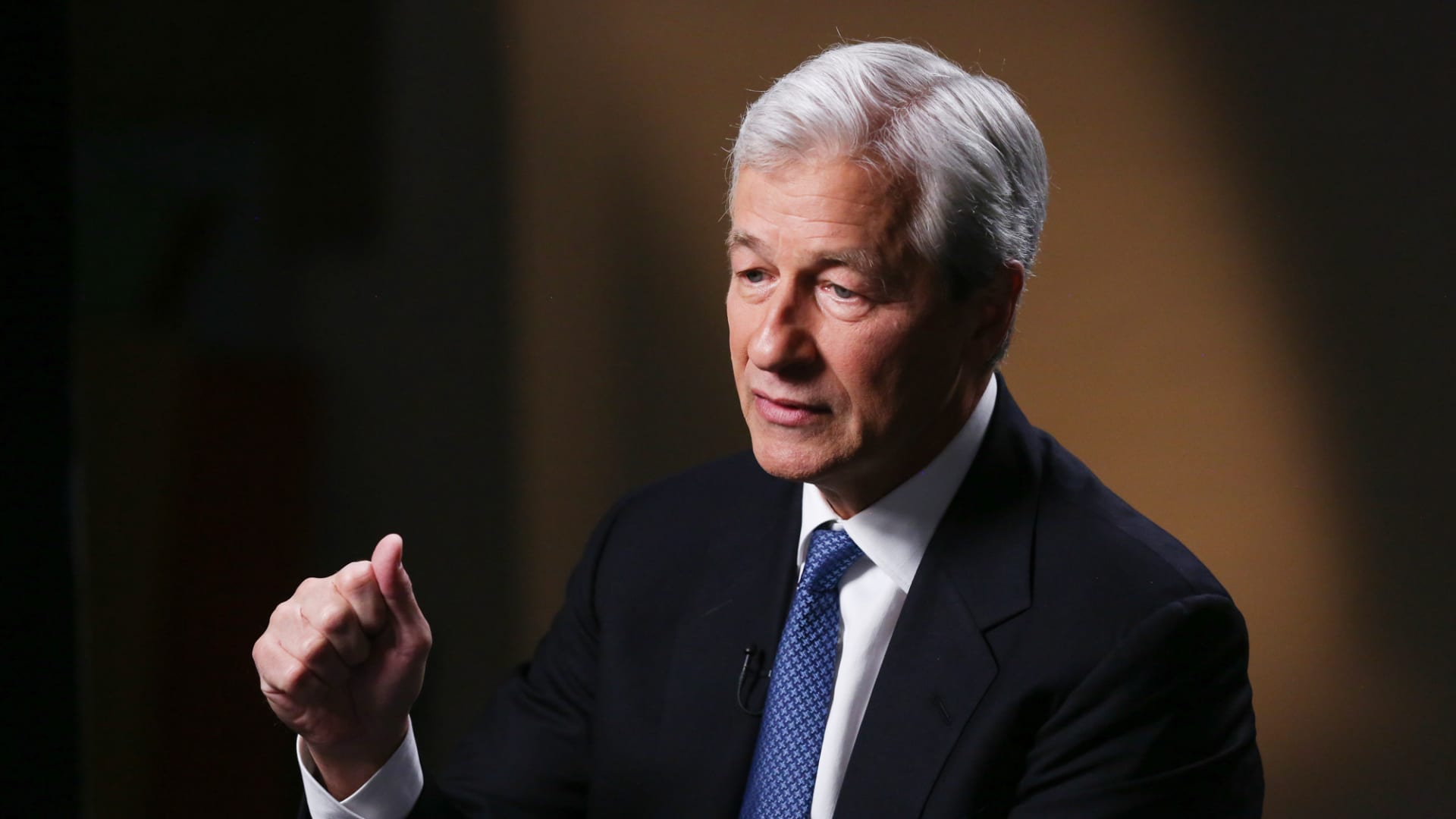[ad_1]
JPMorgan Chase said Thursday that second-quarter profit slumped as the bank built reserves for bad loans by $428 million and suspended share buybacks.
The actions reflect Chairman and CEO Jamie Dimon’s increasingly cautious stance. “The U.S. economy continues to grow and both the job market and consumer spending, and their ability to spend, remain healthy,” he said in the earnings release.
“But geopolitical tension, high inflation, waning consumer confidence, the uncertainty about how high rates have to go and the never-before-seen quantitative tightening and their effects on global liquidity, combined with the war in Ukraine and its harmful effect on global energy and food prices are very likely to have negative consequences on the global economy sometime down the road,” he warned.
With this outlook, JPMorgan has opted to “temporarily” suspend its share repurchases to help it reach regulatory capital requirements, a prospect feared by analysts earlier this year. Last month, the bank was forced to keep its dividend unchanged while rivals boosted their payouts.
Shares of JPMorgan fell nearly 5% in trading Thursday, hitting a fresh 52-week low.
Here’s what the company reported compared with what Wall Street was expecting, based on a survey of analysts by Refinitiv:
- Earnings per share: $2.76 vs. $2.88 expected
- Managed revenue: $31.63 billion vs. $31.95 billion expected
Profit declined 28% from a year earlier to $8.65 billion, or $2.76 a share, driven largely by the reserve build, New York-based JPMorgan said in a statement. A year ago, the bank benefited from a reserve release of $3 billion.
Managed revenue edged up 1% to $31.63 billion, helped by the tail wind of higher interest rates, but was still below analysts’ expectations, according to a Refinitiv survey. It was just the second time JPMorgan missed on both profit and revenue since 2020.
The bank’s earnings miss “is not terrible” because non-Wall Street operations performed well as deposits grew and borrowers continue to repay debts, Wells Fargo bank analyst Mike Mayo said in a research note. But it would be more palatable if the bank lowered guidance on expenses, he added.
JPMorgan, the biggest U.S. bank by assets, is closely watched for clues on how the banking industry fared during a quarter marked by conflicting trends. On the one hand, unemployment levels remained low, meaning consumers and businesses had little difficulty repaying loans. Rising interest rates and loan growth mean that banks’ core lending activity is becoming more profitable. And volatility in financial markets has been a boon to fixed income traders.
But analysts have begun slashing earnings estimates for the sector on concern about a looming recession, and most big bank stocks have sunk to 52-week lows in recent weeks. Revenue from capital markets activities and mortgages has fallen sharply, and firms are disclosing write-downs amid the broad decline in financial assets.
Importantly, a key tail wind the industry enjoyed a year ago — reserve releases as loans performed better than expected — has begun to reverse as banks are forced to set aside money for potential defaults as the risk of recession rises.
The bank had a $1.1 billion provision for credit losses in the quarter, including the $428 million reserve build and $657 million in net loan charge-offs for soured debt. JPMorgan said it added to reserves because of a “modest deterioration” in its economic outlook.
Back in April, JPMorgan was first among the banks to begin setting aside funds for loan losses, booking a $902 million charge for building credit reserves in the quarter. That aligned with the more cautious outlook Dimon has been expressing. In early June he warned that an economic “hurricane” was on its way.
Asked on Thursday to update his forecast, Dimon told reporters during a conference call that it hadn’t changed, but the concerns had edged closer, and that some of the financial dislocations he had feared had begun to materialize.
The slowdown in Wall Street deals stung JPMorgan, which has one of the biggest operations on the Street. Investment banking fees fell a steep 54% to $1.65 billion, $250 million below the $1.9 billion estimate. Revenue in that division was impacted by $257 million in markdowns on positions held in the firm’s bridge loans portfolio.
Fixed income trading revenue jumped 15% to $4.71 billion, but that was still well below analysts’ $5.14 billion estimate for the quarter, as strong results in macro trading were offset by weakness in credit and securitized products. Equities trading revenue also jumped 15%, to $3.08 billion, which edged out the $2.96 billion estimate.
It was the bank’s second-best quarter ever for trading revenue, Wall Street division head Daniel Pinto told employees in a memo after results were released.
One tail wind the company has is rising U.S. rates and a swelling book of loans. Net interest income jumped 19% to $15.2 billion for the quarter, topping analysts’ $14.98 billion estimate.
JPMorgan said at the firm’s investor day in May that it could achieve a key target of 17% returns this year, earlier than expected, thanks to higher rates. In fact, the bank hit that level this quarter.
Shares of JPMorgan have dropped 29% this year through Wednesday, worse than the 19% decline of the KBW Bank Index.
Morgan Stanley also reported earnings Thursday and like JPMorgan, its results were shy of Wall Street’s expectations. The bank was hurt by a drop investment banking revenue.
Wells Fargo and Citigroup are expected to post their results Friday and Bank of America and Goldman Sachs are slated for Monday.
[ad_2]
Image and article originally from www.cnbc.com. Read the original article here.

